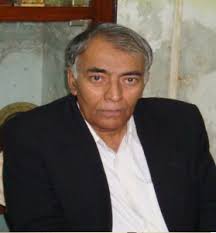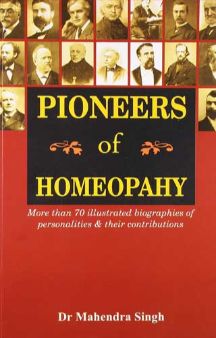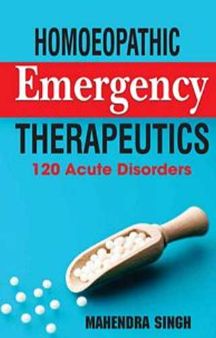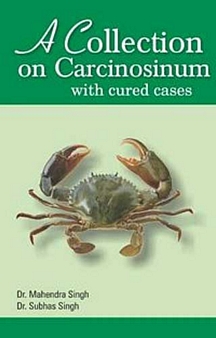
Dr. Dr. MAHENDRA SINGH
Dr. Mahendra Singh was a towering figure of late 20th-century Homoeopathy in India. He was a master of Hahnemann’s Organon and he made the subject easy for homoeopathic students in India and abroad through his teachings and writings. He was known as ‘The Resource person’ amongst Homoeopathic world for his wide knowledge and interest on Homoeopathic subjects. He was a polyglot who could read, write and speak Hindi, Bangla, English, German, Maithili, Bhojpuri, Urdu and Oriya. He was a strong personality, a great teacher, clinician, orator, poet, writer and administrator. Dr. B.K. Sarkar used to call him ‘Parshuram of Homoeopathy’ as he lived a simple life like a saint but he also fought for Homoeopathy like a warrior when required with his knowledge like Parshuram. It is difficult to compile all his life, works and contributions in few pages due to his versatile nature and involvement in various fields of Homoeopathy. EARLY LIFE He was born on 1st March 1939 at Ratanpur Abhiman in Darbhanga district of Bihar. He was the eldest son of Sri Suraj Singh and Smt Anar Devi. He came from a very poor family. His father, Sri Suraj Singh came to Calcutta after getting a job of police constable in Calcutta Police for better livelihood. Till 4 years of age Dr. Mahendra Singh was studying in village Pathasala. He first came to Calcutta for treatment of an ailment which no doctor could understand in his village. Ailment was an excuse; it was his call of destiny to Calcutta. He came and he settled here. He continued his studies initially from Arya Balak Vidyalaya at Padampur and then shifted to Vishnudhanand Saraswati Vidyalaya. He completed his matriculation in 1954. Fond of poetry and dilettante of writing he wrote many poems in Bhojpuri, Hindi, and Maithili during his school life only. Some were published in journals, some were sung at theatres and some were sung by Bihari folk artists on Radio stations. After finishing schooling, for further studies he joined the famous Bangabasi College with the dream of becoming a pilot. HOMOEOPATHIC EDUCATION In 1955 his college was closed for many years due to some political agitation. Uncertain of his fate and future he joined the oldest homoeopathic medical college, The Calcutta Homoeopathic Medical College and Hospital (CHMCH) on his brother-in-law’s advice. Initially he had no interest in the course but gradually he started admiring the homoeopathic principles under the pervading influence of great teachers in the college. In 1960 he successfully passed the D.M.S exam and secured second position in the final D.M.S exam. He passed his M.B.S. examination conducted by the Council of Homoeopathic Medicine, West Bengal in 1972. He was a direct student of Homoeopathic stalwarts of Bengal like Dr. B.K. Bose, Dr. B.N. Chakravorty, Dr. P. Saha and Dr. G.N. Sinha, etc. He had immense interest in Organon of Medicine and so in 2004 at 64 years of age he completed his degree of M.D. (Hom.) in Organon & Homoeopathic Philosophy subject from D.K.M.M. Homeopathic Medical College and Hospital from Aurangabad under B.A. Marathwada University. HOMOEOPATHY PROFESSION AND LATER LIFE At 19 years of age, on 29th May 1958 he married Smt. Brij Naina. They had one son Dr. Subhas Singh and one daughter Alka Singh. After passing the D.M.S exam he served as Junior and then Senior Resident House Surgeon and House Physician at CHMCH from 1960-1962. From 1962 to 1963 he worked as a Resident Medical Officer (R.M.O) at Pratap Chandra Memorial Medical College & Hospital (PCMMCH). He learned a lot in PCMMCH about independently running a hospital under the guidance of Dr. Atul Chandra Majumdar and Dr. Bijoy Kumar Das. Dr. Atul Chandra Majumdar was the youngest grandson of the famous Dr. J.N. Majumdar. His teaching profession started accidently in 1963 when he started teaching at three different colleges simultaneously for better livelihood. He was teaching Organon and Anatomy at Bengal Allen Homoeopathy Medical College; demonstrating surgical instruments, bandages, minor surgical procedures, labour processes, etc. at PCMMCH and teaching Pharmacy and Organon at CHMCH. After serving at CHMCH as Lecturer for a long time Dr. Singh was appointed the Head of the Department of Organon & Homeopathic Philosophy in 1977. With his hard work and dedication, he soon earned the title of the Superintendent of the same institution. He retired from the service in 1999 but he got another 5 years of additional tenure up to 2004. He was also a Guest Faculty at different times to National Institute of Homoeopathy (NIH), P.C.M. Homoeopathy Medical College, D.N. De Homoeopathic Medical College and N.K.B.M. Homoeopathy Medical College. CONTRIBUTION TO THE DEVELOPMENT OF HOMOEOPATHY Dr. Mahendra Singh had a strong love for Organon. He was a part of a Committee formed by CCH to revise and streamline B.H.M.S. curriculum. The committee decided to drop the Organon subject from the final year syllabus. But he convinced officials tactfully and made the subject to be included in the syllabus until final year. He was instrumental in preparing and introducing the M.D. (Hom.) course and curriculum in subjects of Practice of Medicine, Paediatrics, Psychiatry and Homoeopathic Pharmacy. He contested and won the election for becoming a member of CCH held in 1990 and 1998. He also became the elected Chairman of the Education Committee which he served till the last day of his life. Dr. Mahendra Singh conducted numerous continued medical education (CME) throughout all districts of West Bengal for experienced-based practising homoeopaths when the Homoeopathic Council planned to conduct an exam for Part-B registration doctors. He also served as a Teacher in-Charge of the CME program organized by the Bengal Medical Union. Dr. Singh became the National President of the Homeopathic Medical Association of India (HMAI), in 2003. He also served as Secretary General of Indian Homoeopathic Teachers Association and took great efforts to improve the salary and status of homoeopathic teachers. He was visiting teacher of various homoeopathic institutions of Winnipeg, Manitoba, Canada, Germany and Switzerland. All these works earned him the title of ‘Teacher of the Teachers’ in the Homoeopathic fraternity. For almost 50 years he attended Cheap Pay Clinics in most remote rural areas West Bengal, Odisha and Bihar to make the best homoeopathic treatment available to the poor patients at the cheapest price. Similarly, he used to organize clinics regularly at his clinic cum residence and used to devote his whole day for free treatment of the patients. He was referred to as the ‘Messiah of the poor’ by his patients. He have also done proving of various Indian drugs such as Phyllanthus niruri (Bhui amla), Cypresus rotundus (Mutha), Leucas aspera (Goma), Mimosa pudica (Lajjawati), and toxin of Plotossus amangularis (Kan-magur fish). LITERATURE CONTRIBUTION Dr. Mahendra Singh learnt German language, managed to possess all the editions of Organon in the original, old dictionary and corrected all the mistakes of Dudgeon, Boericke and other translators. He published a new and corrected translation of the 5th and 6th edition of Organon. This work created a great hubbub in the world of Homoeopathy but he became immortal with this work. He also published the 1st complete English translation version of 1st edition of Organon of Medicine exactly after 200 years of its original publication. He even corrected errors of all standard books on Materia Medica, Pharmacy and Pharmacoepias of different countries which was serially published in The Hahnemannian Gleanings. All these actions show his determination to improve Homoeopathic literature for its best utilisation by upcoming homoeopathic generations. He translated Rudolf Tischner’s Geschichte der Homoeopathic (History of Homoeopathy, Vol. I) from German to English and edited Ameke’s History of Homoeopathy. He published Organon and Materia Medica in the Bangla language. His writings on Homoeopathic Philosophy are serialized into 13 volumes. He published the life and history of various Homoeopathic stalwarts in his work “The Pioneers of Homoeopathy '' to motivate beginners in Homoeopathy. He served as Editor of the Bengali Homoeopathy journal Homoeo-Darpan from 1967 to 1976 and chief editor of Homoeopathic Light Journal published in English from 1967 to 1968. CONCLUSION Dr. Mahendra Singh is one of the few stalwarts who was revered as a teacher, loved as a person and followed as a leader by everyone. His life portrays that with internal strength and determination one can fulfil one’s dream. He came from a background of poor family from Bihar and not only earned money but also earned a name for himself which is still remembered and will be remembered in future for his selfless service to Homoeopathy. Homoeopathic world lost him on 15th October 2012, at 74 years of age.



